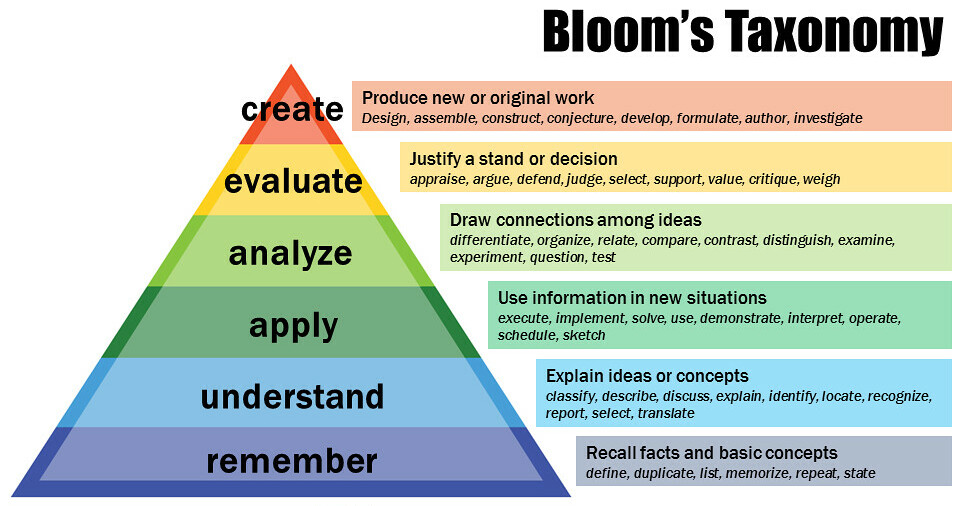
To open this article, ChatGPT, a chatbot developed by OpenAI, introduces itself. This introduction helps us understand, or at least reflect on, the conflicting opinions and uneasy feelings provoked by its widespread popularity since its launch in November 2022:
Hello English Language Teachers! I am ChatGPT, a highly advanced artificial intelligence language model…I have been trained on a diverse range of texts and topics, including information on grammar rules, pronunciation, vocabulary, and much more. This makes me an ideal tool for English language teachers and students alike, as I can assist in answering questions and providing explanations, generat[ing] text on a given topic such as writing essays, composing stories, or even creating lesson plans. This makes me a valuable resource…as a starting point for [your] lessons, or as a way to engage [your] students in conversation or writing exercises. (OpenAI, 2023a)
This situation reminds us of how previously
launched technologies (e.g., smartphones) also caused
fears and enchantment but later became an integral part of our daily
social and educational practices. In fact, and especially, after the COVID-19
pandemic, our social interactions became increasingly dependent upon digital
technologies; therefore, considering that educators have been continuously
examining the effectiveness of various technologies when utilized as
pedagogical resources, our main focus turns to artificial intelligence (AI) and
the pedagogical affordances of ChatGPT.
About ChatGPT
The acronym GPT stands for generative pre-trained transformer. Pre-trained means that when ChatGPT is used to generate texts, it does not browse the Internet. Instead, it bases the generation of text upon its previously trained datasets (Brown et al., 2020). ChatGPT’s training data included sources up to 2021, so at times it might not be the most adequate tool to develop content consisting of current events. The second term, transformer, indicates that its architecture was built using machine learning algorithms (OpenAI, 2023b). Also noteworthy is that ChatGPT is not a standalone language model because it is a subset of GPT-3, a much more powerful model, released in 2020 (see the generative AI timeline in Appendix A).
Capabilities
As an optimized version of GPT-3’s capabilities, ChatGPT has impressed us with its abilities to translate language; generate, complete, and classify text; and carry out conversations in diverse genres (e.g., articles, poems, short stories, and narratives). As such, the outstanding levels of proficiency often make it hard to distinguish ChatGPT from human-created content. Additionally, ChatGPT is capable of creating podcast outlines; composing song lyrics; and writing blog posts, advertisements, and video scripts. ChatGPT can create entire lesson plans and give individualized feedback on students’ writing. With this in mind, our main goal is to highlight some pedagogical affordances of ChatGPT to offer different ways in which it can be integrated into teaching.
Limitations
Before sharing ideas on the ChatGPT integration into teaching, it is worth mentioning some limitations. The following limitations have been noted by OpenAI (2023b):
-
ChatGPT possibly provides incorrect information without a citation source.
-
ChatGPT generates new text or different answers with only slight alterations in the prompts or repeating previously utilized phrases.
-
ChatGPT assumes interpretations, even if the posed questions sound ambiguous.
-
ChatGPT accepts inappropriate prompts, demonstrating biased actions/language.
ChatGPT and Writing Development
As writers are engaged with writing, their minds are often overflowing with thoughts and emotions. When these emotions are taken for granted, common issues include having writer’s block, feelings of anxiety, and lack of confidence. Additionally, when writing tasks are assigned, students at emerging English language proficiency levels may need additional supports in language and mechanics, such as punctuation and spelling conventions, as well as content related to the given topic and genre expectations. Although these needs in writing are common for everyone, they become even more relevant for second language writers. To address this, research examining how technologies can support writing has reported on how technology tools can enable peer editing and be used for sharing learners’ work (Vicentini & de Oliveira, 2018). Findings demonstrate that technology can enhance student motivation, increase engagement, and scaffold writing.
There have been concerns about the use of ChatGPT for academic writing, particularly regarding cheating, breach of intellectual property, and creativity. Although these concerns are valid, we should also consider the numerous affordances of ChatGPT. A major benefit of ChatGPT is that it can be utilized as a mentor text, which is a great source for scaffolding writing instruction. For example:
Prompts and Paraphrasing: Instructors can show students how AI can be used as a resource for writing prompts and paraphrasing. Teachers can have students place different classmates’ entries (or examples from textbooks) into ChatGPT and have it paraphrase the content. The paraphrased output could in turn serve as a mentor text that would be analyzed in detail and assessed for quality, information accuracy, language choices, and style as part of the deconstruction phase in genre-based pedagogy (Vicentini et al., 2022).
Teacher Professional Development: Boa Sorte et al. (2021) described how ChatGPT’s algorithm can be applied and implemented into writing practice, using it for teacher reflection, planning, and preparation.
Based on these examples, and considering that scaffolding strategies are known to enhance writing development and should be incorporated into writing instruction, we make a case for the integration of ChatGPT as a pedagogical resource due to its numerous affordances. Next, we offer practical examples of how the tool can successfully enhance writing instruction.
Integrating ChatGPT Into Writing Instruction
To afford opportunities for higher level thinking, we recommend using the revised Bloom’s taxonomy (Anderson et al., 2001; see Figure 1) as a guide to create activities incorporating ChatGPT. The activities should include information about learners, context, objectives, tasks, and assessment criteria. The tasks can vary by level of complexity: from a low level of understanding up to the highest level of evaluation. To illustrate, you can check the table created by the Center of Excellence in Learning and Teaching at Iowa State University, which contains examples for each level of critical thinking.

Figure 1. Revised Bloom’s Taxonomy. (The
Center for Teaching, Vanderbilt University, 2016, CC BY
2.0; click here to enlarge.)
Remember and Understand
Considering that remember and understand require learners to retrieve prior knowledge, you can ask learners to list or summarize, recognize or classify, recall or clarify, and identify or predict. ChatGPT can be integrated into these tasks as an ideas generator, used for brainstorming and helping learners spark further thinking. For example, brainstorm ideas for a podcast script (see Appendix B for a full lesson plan).
Apply
The apply level of the taxonomy can be used for discussions. Learners can respond to frequently asked questions or provide advice. For example, ChatGPT can be implemented as an introductory activity before the discussion so that students can gain awareness, reflect, consider perceptions, talk, and then discuss (see Appendix B).
Analyze
The analyze level helps learners break materials into foundational parts and determine how those parts relate to one another. ChatGPT can support achieving this challenging level. Watkins (2022), among other activities, outlines how learners can use AI to reflect and improve by
- identifying a major question in their field,
- utilizing ChatGPT to answer the question,
- reflecting on the output and their own next steps, and
- improving on the output.
Mollick (2023), in his blog “The Practical Guide to Using AI to Do Stuff,” shares how students can just write anything and then ask ChatGPT how to make their own writing better, or how they can ask the chatbot to suggest a header or opening paragraph to combat writer’s block.
Evaluation
Finally, ChatGPT can help learners achieve the evaluation level of Bloom’s taxonomy; this is one of its highest levels and requires learners to make judgements based on criteria and standards. When using ChatGPT, instructors can create a prompt competition to promote critical thinking by asking students to develop criteria collaboratively, create prompts individually, and then pose the questions to ChatGPT and use their predefined criteria to evaluate the responses, rating and ranking the responses to determine who wrote the best prompts (Watkins, 2022).
Conclusion
ChatGPT has brought numerous and relatively vital calls for reflection, discussion, and change among educators. Changes such as this can give rise to fear of the unknown and lack of confidence, and it can leave educators feeling as if there is the constant need for adaptation; nonetheless, ChatGPT has come to stay. Like previous technologies (the internet or smartphones) and despite some early reactions to negative impacts, ChatGPT is a powerful tool with incredible potential; to reap its benefits, we must perceive it as a pedagogical resource.
This article demonstrates how ChatGPT can be integrated into education, specifically into writing classes. Ideas shared in this article can help teachers, teacher educators, schools, and higher education institutions to consider creative ways to start using ChatGPT to develop students’ higher levels of critical thinking.
References
Anderson, L. W., Krathwohl, D. R., Airasian, P. W., Cruikshank, K. A., Mayer, R. E. Pintrich, P. R., Raths, J., & Wittrock, M. C. A. (Eds.). (2001). A taxonomy for learning, teaching, and assessing: A revision of Bloom’s taxonomy of educational objectives. Addison Wesley Longman.
Boa Sorte, P., de Freitas Farias, M. A., dos Santos, A. E., do Carmo Andrade Santos, J., & dos Santos Rodrigues Dias, J. S. (2021). Artificial intelligence in academic writing: What is in store with the GPT-3 algorithm? Revista EntreLinguas,7(00), 1–22. https://doi.org/10.29051/el.v7i00.15352
Brown, T. B., Mann, B., Ryder, N., Subbiah, M., Kaplan, J., Dhariwal, P., Neelakantan, A., Shyam, P., Sastry, G., Askell, Agarwal, S., Herbert-Voss, A., Krueger, G., Henighan, T., Child, R., Ramesh, A., Ziegler, D. M., Wu, J., Winter, C., … Amodei, A. (2020, May 28). Language models are few-shot learners. https://arxiv.org/pdf/2005.14165v1.pdf
OpenAI. (2023a). ChatGPT (Mar 23 version) [Large language model]. https://chat.openai.com/chat
OpenAI. (2023b). Introducing ChatGPT. https://openai.com/blog/chatgpt
Vicentini, C., & de Oliveira, L. C. (2018). Using technology tools in writing instruction. NYS TESOL Journal, 5(2), 44–51. http://journal.nystesol.org/july2018/6VicentinideOliveira%28CGFP%29.pdf
Vicentini, C., de Oliveira, L. C., & Gui, J. (2022). Integrating technology into genre-based writing instruction for multilingual learners. GATESOL Journal, 32(2), 27–42. https://doi.org/10.52242/gatesol.167
Watkins, R. (2022). Update your course syllabus for ChatGPT. Medium. https://medium.com/@rwatkins_7167/updating-your-course-syllabus-for-chatgpt-965f4b57b003
|
Download this article (PDF) |
Allessandra Elisabeth dos Santos is a visiting scholar at Virginia Commonwealth University (VCU) and an affiliate of the Multilingual Learners in Schools (VCU). She is a PhD student, Federal University of Sergipe, and holds a CAPES scholarship. Her research focuses on artificial intelligence and English language writing. She holds a postbaccalaureate in education, University of Winnipeg. Allessandra has 26 years of experience in TESOL/TEFL as a teacher, a teacher educator, and an academic coordinator.
Larisa Olesova, PhD, is a clinical assistant professor in the School of Teaching and Learning at the University of Florida. Her research focuses on distance education, specifically asynchronous online learning environments. Other areas of research and practice include aspects of online presence, the community of inquiry, instructional strategies, and best practices in online teaching.
Cristiane Vicentini, PhD, is an academic technology solutions support specialist at The University of Tampa. Her research interests include TESOL, multiliteracies, multimodality, and the use of technology for language teaching and learning. Her work has been published in peer-reviewed books and journals in the United States and in Brazil. She has been actively engaged in the field of education, teaching students from diverse cultures and socioeconomic backgrounds in face-to-face, hybrid, and virtual learning environments.
Luciana C. de Oliveira, PhD, is associate dean for academic affairs and graduate studies and a professor in the School of Education at Virginia Commonwealth University. Her research focuses on issues related to teaching multilingual learners in K–12, including the role of language in learning the content areas and teacher education. She is a past president of TESOL International Association.
| Next Article |
